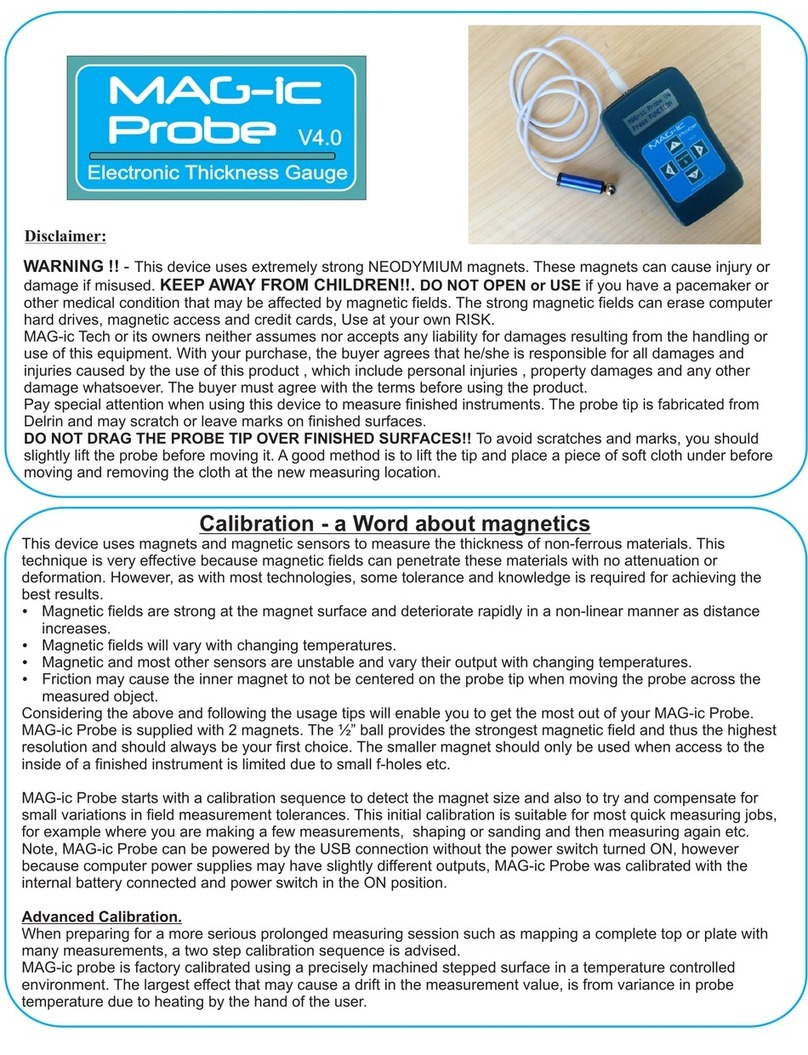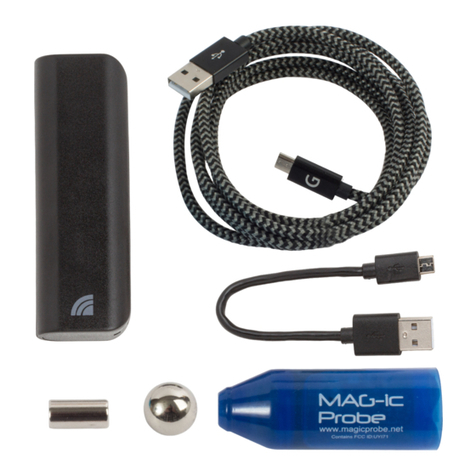
Calibration - a Word about understanding magnetics
MAG-ic Probe uses magnets and magnetic sensors to measure the thickness of any non-ferrous
materials. This technique is very effective because magnetic fields can penetrate these materials with
no attenuation or deformation.
However, as with most technologies, some tolerance and knowledge is required for achieving the best
results.
ŸMagnetic fields generated by permanent magnets are very strong at the magnet surface, but
deteriorate very rapidly in a non-linear manner as the distance increases.
ŸMagnetic fields vary with temperature, even fractions of a degree will have an effect.
ŸMagnetic sensors also vary their output with temperature and suffer from internal fluctuations.
ŸFriction of the magnet on the material surface may cause it to not be centered on the probe tip
when moving the probe across the measured object.
ŸDust and surface anomalies may cause the probe to be off perpendicular with regards to the
external magnet.
ŸMagnetic fields are affected by metallic objects and even the Earths magnetic field can influence
your measurements.
Considering the above, and following the usage recommendations will enable you to get the most out
of your MAG-ic Probe. MAG-ic Probe is supplied with 2 magnets. The ½” ball provides the strongest
magnetic field and thus the highest resolution, and should always be your first choice. The smaller
magnet should only be used when access to the inside of a finished instrument is limited due to small
f-holes etc, for example violins and mandolins.
IMPORTANT - MAGNETS
MAG-ic Probe uses extremely strong Neodymium magnets. These magnets are brittle and can chip if
mishandled. Each MAG-ic Probe is carefully calibrated to the magnets supplied with it. a Large chip may affect
the accuracy of the device. The biggest cause of magnets chipping is when the 2 supplied magnets are allowed
to SNAP together or to steel objects. Please handle carefully. Best practice is to leave the magnets in the
storage case and when a magnets is required, hold the other magnet in place with 1 hand and use the tip of the
MAG-ic Probe to extract the required magnet from the storage case. Use the same method to replace the
magnet.
On startup, MAG-ic Probe provides a calibration sequence to detect the magnet size and to
compensate for small variations in field measurement tolerances like temperature and location.
This initial calibration is suitable for most quick measurements, for example when you are making a
few measurements during shaping or sanding and then re-measuring periodically. This basic
calibration can and should be repeated often if conditions change, by repeating the Initial Calibration
sequence below, OR when using USB and the MAG-ic Probe Software, by selecting the CALIBRATE
option.
For more prolonged measuring and contour mapping sessions, see the Advanced Calibration
section.



























